Air compressors are vital instruments across multiple sectors. Comprehending their operational principles, classifications, and applications facilitates the effective utilization, maintenance, and selection of the appropriate compressor for certain requirements.
Applications of Air Compressors:
Air compressors possess several applications, encompassing:
- Automotive: Tire inflation, painting, and sandblasting • Construction: Powering pneumatic instruments such as jackhammers and rivet guns• Manufacturing: Utilizing pneumatic gear and energizing spray-painting systems
- Medical: Operating dental apparatus and energizing medical instruments
An air compressor operates by intake of atmospheric air, compressing it to elevated pressure, and storing it in a tank for subsequent utilization. This compressed air can then be utilized to operate various machines and equipment.
Here’s a step-by-step breakdown of the process:
- Intake:
- The compressor draws in atmospheric air through an intake valve.
- Compression:
- The air is compressed by a piston or rotating blades, reducing its volume and increasing its pressure. This compression can occur in a single stage or multiple stages, depending on the desired pressure level.
- Storage:
- The compressed air is stored in a tank, where it can be released as needed. The tank maintains a constant pressure, ensuring a steady supply of compressed air.
- Release:
- When a tool or equipment is activated, a valve opens, releasing the compressed air from the tank.
- As the air expands, it exerts force, powering the tool or equipment.
Key Points:
- Air compressors increase the pressure of air by reducing its volume.
- Compressed air can be stored in a tank for later use.
- Air compressors are used in a variety of industries and applications.
Types of Air Compressors:
There are two main types of air compressors:
Positive Displacement Compressors: These compressors use a piston or rotating blades to directly compress the air. Examples include reciprocating, rotary screw, and scroll compressors.
Positive displacement compressors are compressors that utilize mechanical action to compress a predetermined volume of gas. There exist four primary categories of positive displacement compressors:
- Reciprocating Piston Compressors:
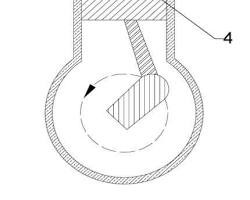
Reciprocating Piston Compressor Diagram
Reciprocating piston compressors use a piston that moves back and forth in a cylinder to compress the gas. As the piston moves towards the top of the cylinder, the volume of the gas decreases, increasing the pressure. When the piston reaches the top of its stroke, the compressed gas is released through a valve.
- Rotary Screw Compressors:
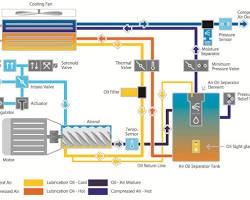
Rotary Screw Compressor Diagram
Rotary screw compressors use two meshing helical screws to compress the gas. As the screws rotate, the gas is trapped between the screws and the casing. The volume of the gas decreases as it moves towards the discharge port, increasing the pressure.
- Rotary Vane Compressors:
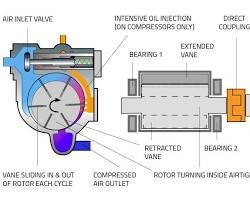
Rotary Vane Compressor Diagram
Rotary vane compressors use a rotor with vanes that slide in and out of slots in the rotor. As the rotor turns, the vanes trap the gas between themselves and the casing. The volume of the gas decreases as it moves towards the discharge port, increasing the pressure.
- Scroll Compressors:
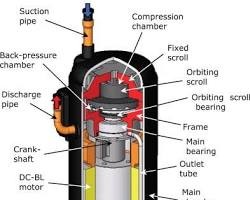
Scroll Compressor Diagram
Scroll compressors use two spiral-shaped elements that orbit each other to compress the gas. As the elements orbit, the gas is trapped between the spirals and the casing. The volume of the gas decreases as it moves towards the center of the compressor, increasing the pressure. Positive displacement compressors are used in a variety of applications, including air conditioning, refrigeration, and industrial processes. They are generally more efficient than other types of compressors, but they can be more expensive to purchase and maintain.
Dynamic Compressors: These compressors use the kinetic energy of a rotating impeller to compress the air. Examples include centrifugal and axial flow compressors.
There are two main types of dynamic compressors: centrifugal and axial flow.
- Centrifugal Compressors:
Centrifugal Compressor Diagram
Centrifugal compressors use a rotating impeller with vanes to accelerate the gas. The gas enters the center of the impeller and is accelerated outward by centrifugal force. As the gas moves outward, its velocity increases, and its pressure also increases. The high-velocity gas then enters a diffuser, where its velocity is converted into pressure.
- Axial Flow Compressors:
Axial Flow Compressor Diagram
Axial flow compressors use a series of rotating and stationary blades to compress the gas. The gas enters the compressor and is accelerated by the rotating blades. As the gas moves through the compressor, it passes through multiple stages of blades, each stage increasing the pressure of the gas.
Dynamic compressors are used in a variety of applications, including power generation, gas turbines, and industrial processes. They are generally more efficient than positive displacement compressors at high flow rates, but they can be more expensive to purchase and maintain.

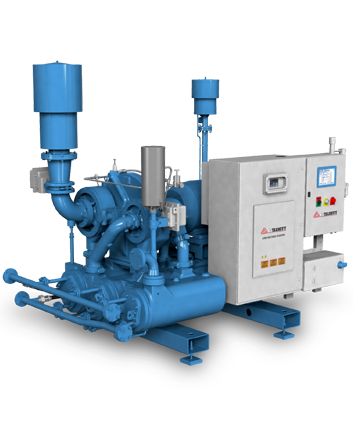

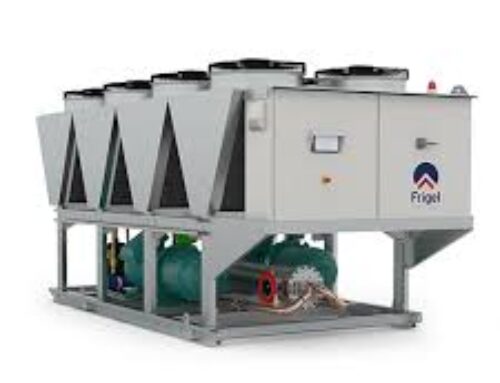
Leave A Comment